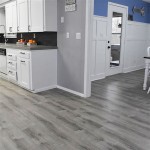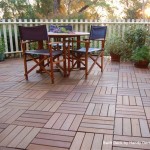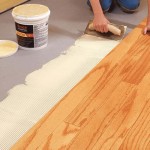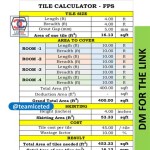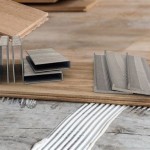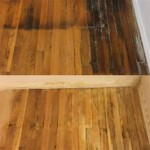The Enduring Appeal of Real Wood Flooring
Real wood flooring, a timeless and elegant choice for residential and commercial spaces, continues to captivate with its natural beauty, durability, and enduring value. Unlike synthetic alternatives, real wood flooring offers a unique character derived from the inherent variations in grain pattern, color, and texture of the trees from which it's sourced. Its longevity, coupled with its ability to be refinished, ensures that real wood flooring can grace a home or building for generations, making it a sustainable and aesthetically pleasing investment.
The term "real wood flooring" encompasses a broad range of products, each distinguished by species, cut, construction, and finish. Understanding these distinctions is crucial for selecting the most appropriate flooring for a given application, considering factors such as traffic levels, moisture exposure, and aesthetic preferences. Careful consideration of these factors will ensure that the chosen wood flooring not only complements the space but also stands the test of time.
Understanding Solid and Engineered Wood Flooring
Real wood flooring primarily falls into two categories: solid wood and engineered wood. Solid wood flooring, as the name implies, consists of planks milled from a single piece of wood. This construction provides exceptional stability and durability, making it a favored choice for areas with moderate traffic and stable humidity levels. Solid wood flooring can be sanded and refinished multiple times, extending its lifespan considerably.
Engineered wood flooring, on the other hand, comprises multiple layers of wood veneer bonded together. The top layer, known as the wear layer, is made of a hardwood species, providing the aesthetic appeal of solid wood. The underlying layers typically consist of plywood or other composite materials, offering enhanced stability and resistance to moisture. This construction makes engineered wood flooring a suitable option for areas with fluctuating humidity levels, such as basements and kitchens.
The core layers of engineered wood flooring are typically oriented in opposing directions, which significantly reduces the susceptibility to warping and expansion/contraction that can occur with solid wood in environments with high moisture variation. This dimensional stability is a key advantage of engineered wood, making it a more versatile choice for a wider range of applications.
The thickness of the wear layer in engineered wood flooring is a critical factor to consider. A thicker wear layer allows for more refinishing over the floor's lifespan, mimicking the longevity of solid wood. However, the quality of the underlying layers is equally important, as they contribute to the overall stability and durability of the flooring.
Selecting the Right Wood Species
The choice of wood species profoundly influences the appearance and performance of real wood flooring. Different species exhibit distinct characteristics in terms of color, grain pattern, hardness, and durability. Some popular hardwood species include oak, maple, cherry, walnut, and hickory, each offering a unique aesthetic and functional profile.
Oak, a widely available and moderately priced option, is renowned for its durability and distinctive grain pattern. Red oak features a reddish tint, while white oak exhibits a more neutral tone. Oak's versatility makes it suitable for a wide range of design styles, from traditional to contemporary.
Maple, characterized by its light color and fine grain, offers a more understated and contemporary aesthetic. Maple is a dense and hard wood, making it resistant to dents and scratches. However, its light color can make imperfections more noticeable, requiring diligent maintenance.
Cherry, prized for its rich reddish-brown hue and smooth grain, adds a touch of elegance and sophistication to any space. Cherry is a relatively soft hardwood, making it more susceptible to scratches and dents. However, its inherent beauty and warmth make it a popular choice for formal living areas and dining rooms.
Walnut, a luxurious and visually striking option, features a dark brown color and prominent grain patterns. Walnut is a relatively soft hardwood, making it more prone to scratches and dents. However, its distinctive beauty and luxurious feel make it a desirable choice for high-end residential projects.
Hickory, one of the hardest and most durable hardwood species, is known for its rustic appearance, featuring prominent knots and grain variations. Hickory's exceptional durability makes it an ideal choice for high-traffic areas and homes with pets or children.
Beyond these commonly used species, a variety of exotic hardwoods are also available, offering unique colors, grain patterns, and levels of durability. These exotic options often come with a higher price tag and may require specialized installation and maintenance.
Installation and Maintenance of Real Wood Flooring
Proper installation is crucial for ensuring the longevity and performance of real wood flooring. The installation method depends on the type of flooring (solid or engineered), the subfloor material, and the desired aesthetic. Common installation methods include nailing, stapling, gluing, and floating.
Nailing and stapling are typically used for solid wood flooring, securing the planks directly to a wooden subfloor. These methods provide a strong and stable installation, but they are not suitable for concrete subfloors.
Gluing involves adhering the flooring planks directly to the subfloor using a specialized adhesive. This method is suitable for both solid and engineered wood flooring and can be used over concrete subfloors. However, gluing requires a perfectly level subfloor and careful application of the adhesive.
Floating involves connecting the flooring planks together without attaching them to the subfloor. This method is primarily used for engineered wood flooring and is a relatively quick and easy installation option. Floating floors require an underlayment to provide cushioning and sound insulation.
Regardless of the installation method, it is essential to ensure that the subfloor is clean, level, and dry. Proper acclimation of the flooring to the environment is also crucial to prevent warping or cupping after installation. Acclimation involves allowing the flooring to sit in the room for several days before installation to adjust to the temperature and humidity levels.
Maintaining real wood flooring involves regular cleaning and occasional refinishing. Regular cleaning typically involves sweeping, vacuuming, or damp mopping with a pH-neutral cleaner specifically designed for wood floors. Avoid using harsh chemicals or abrasive cleaners, as they can damage the finish.
Refinishing is a process that involves sanding down the existing finish and applying a new coat of sealant. This process can restore the beauty of worn or damaged wood flooring and extend its lifespan. Solid wood flooring can typically be refinished multiple times, while engineered wood flooring can be refinished depending on the thickness of the wear layer.
Preventative measures, such as using rugs in high-traffic areas and placing felt pads under furniture legs, can help to minimize wear and tear on real wood flooring. Maintaining consistent humidity levels in the home can also help to prevent warping and cracking.
Choosing the right finish is another crucial aspect of maintaining real wood flooring. Different finishes offer varying levels of durability, shine, and resistance to scratches and stains. Common finish options include polyurethane, lacquer, and oil-based finishes. Each finish has its own advantages and disadvantages in terms of appearance, durability, and ease of maintenance.
Polyurethane finishes are durable and water-resistant, making them a popular choice for high-traffic areas and homes with pets or children. However, polyurethane finishes can be difficult to repair and may require professional refinishing.
Lacquer finishes offer a high-gloss appearance and are relatively easy to repair. However, lacquer finishes are less durable than polyurethane finishes and may require more frequent maintenance.
Oil-based finishes penetrate the wood, enhancing its natural beauty and providing a matte or satin finish. Oil-based finishes are relatively easy to repair and maintain, but they may require more frequent applications.
The selection of real wood flooring represents a significant investment in the aesthetics and value of a property. By carefully considering the type of flooring, species, installation method, and maintenance requirements, property owners can ensure that their real wood flooring will provide years of beauty and enjoyment.

Types Of Hardwood Flooring Forbes Home

Heritage Oak Flooring Reclaimed Wood Solid Based

Solid Walnut Wood Flooring British Hardwoods

Real Wood Flooring Archives Page 3 Of 5 Expert Tips Trends And Inspiration For Your Project Mikasa Floors

Rw Supply Design Real Wood Floors

Solid Hardwood Vs Engineered Flooring Carpet One Floor Home

Antique Pine Boardwalk Hardwood Floors

Bellawood Artisan 5 8 In Geneva White Oak Engineered Hardwood Flooring 7 Wide Ll

Mayflower 3 4 In Millrun Hickory Solid Hardwood Flooring 25 Wide Ll

Environmental Benefits Of Engineered Wood Flooring Real Floors
Related Posts

